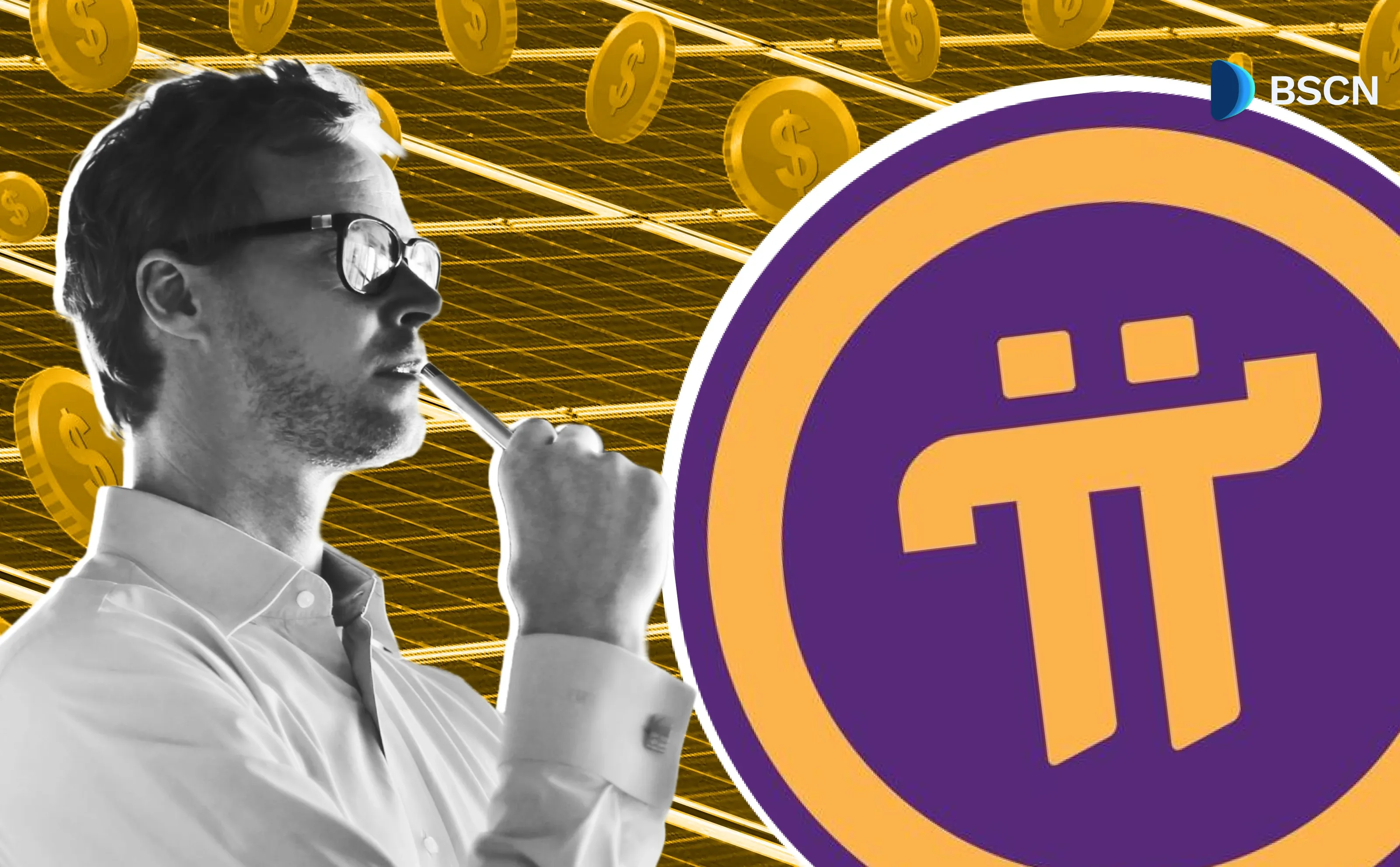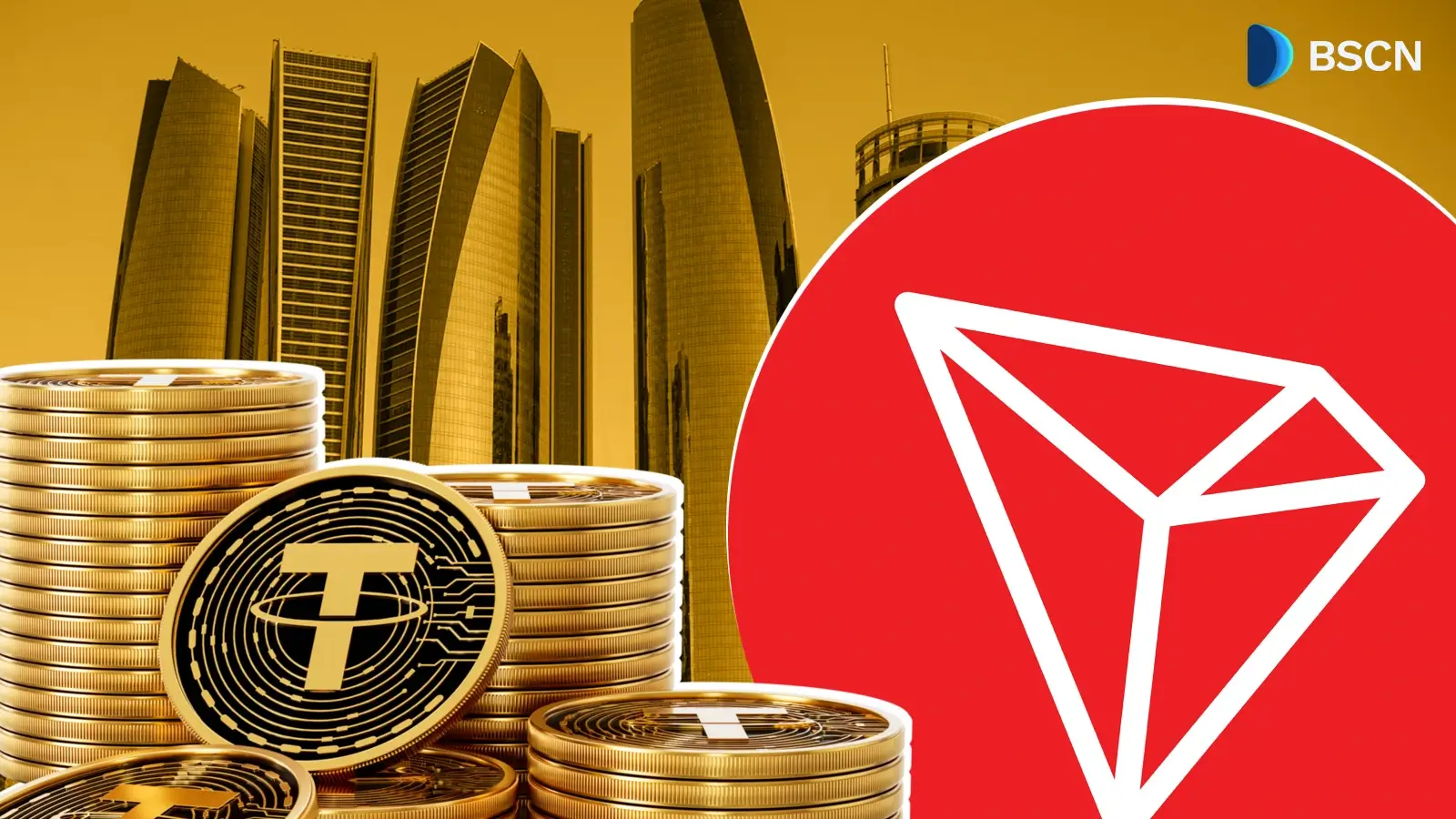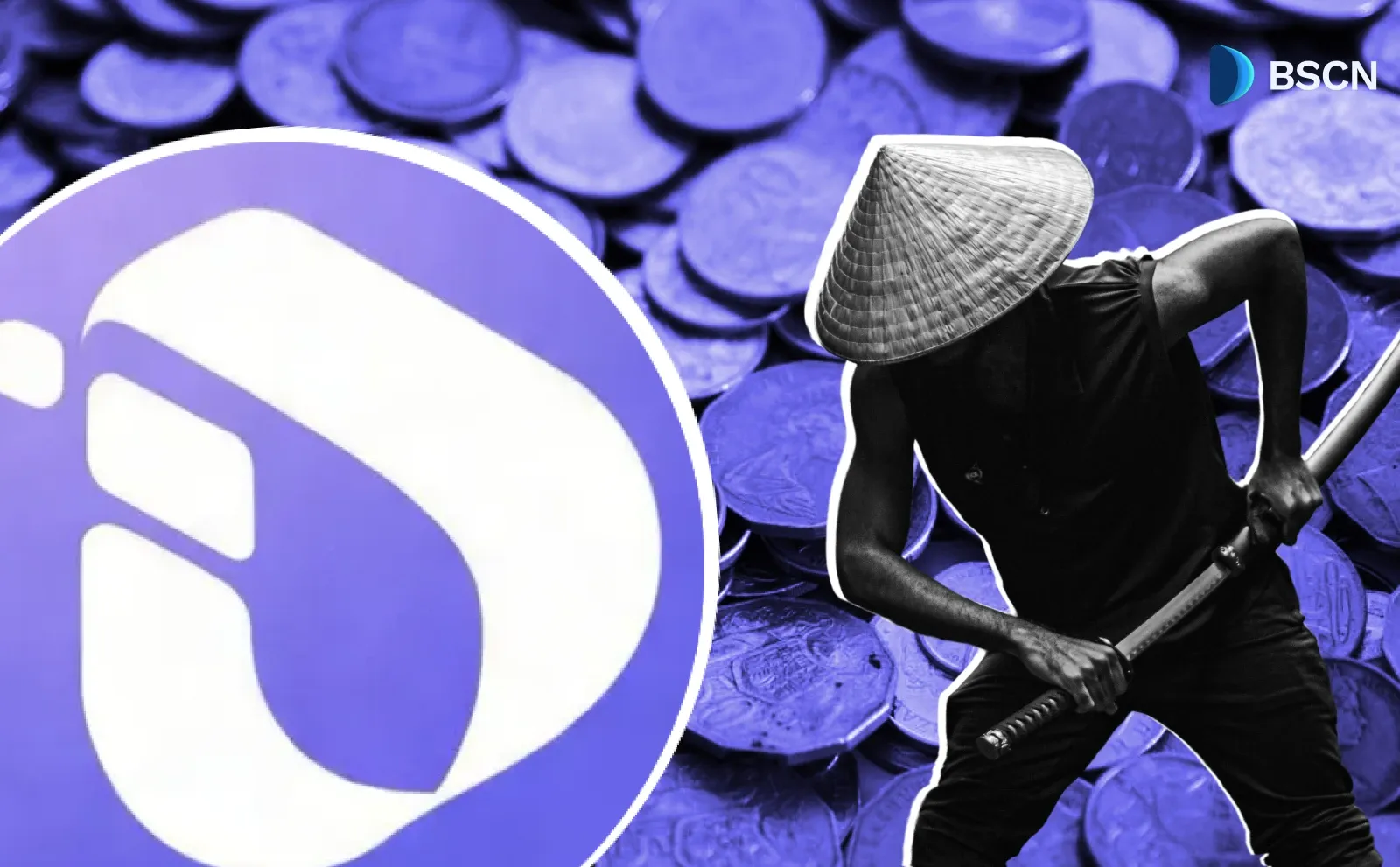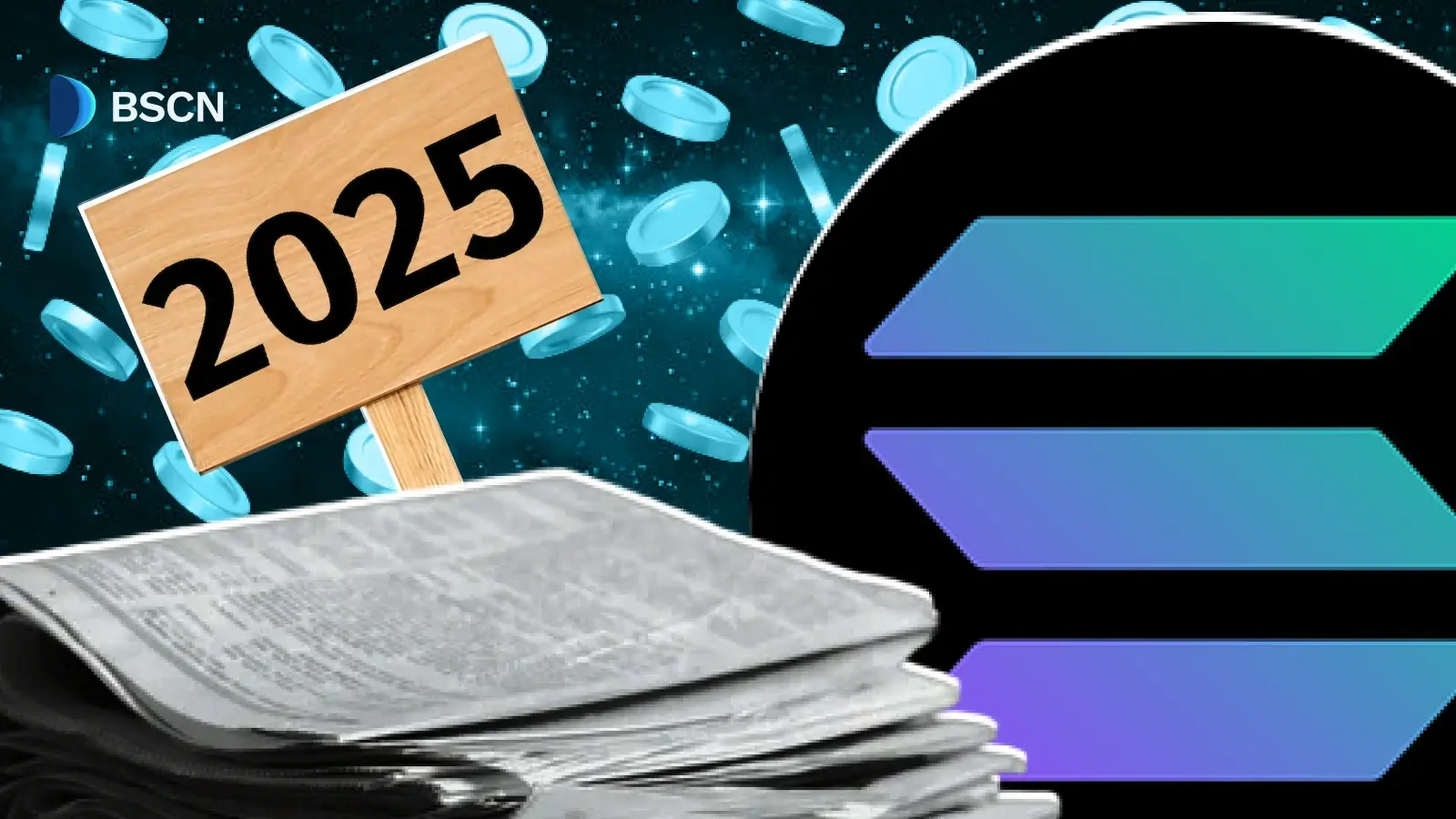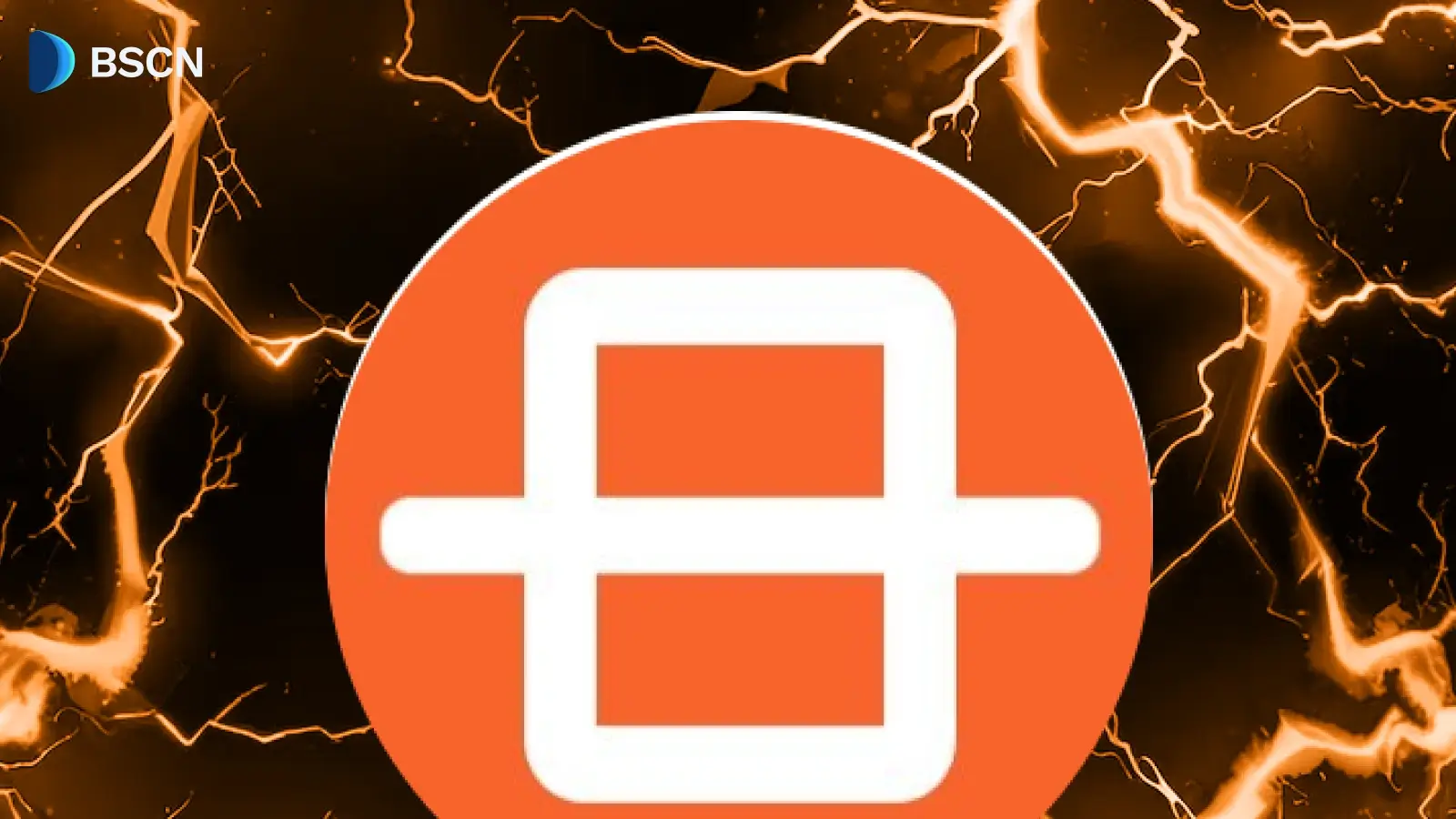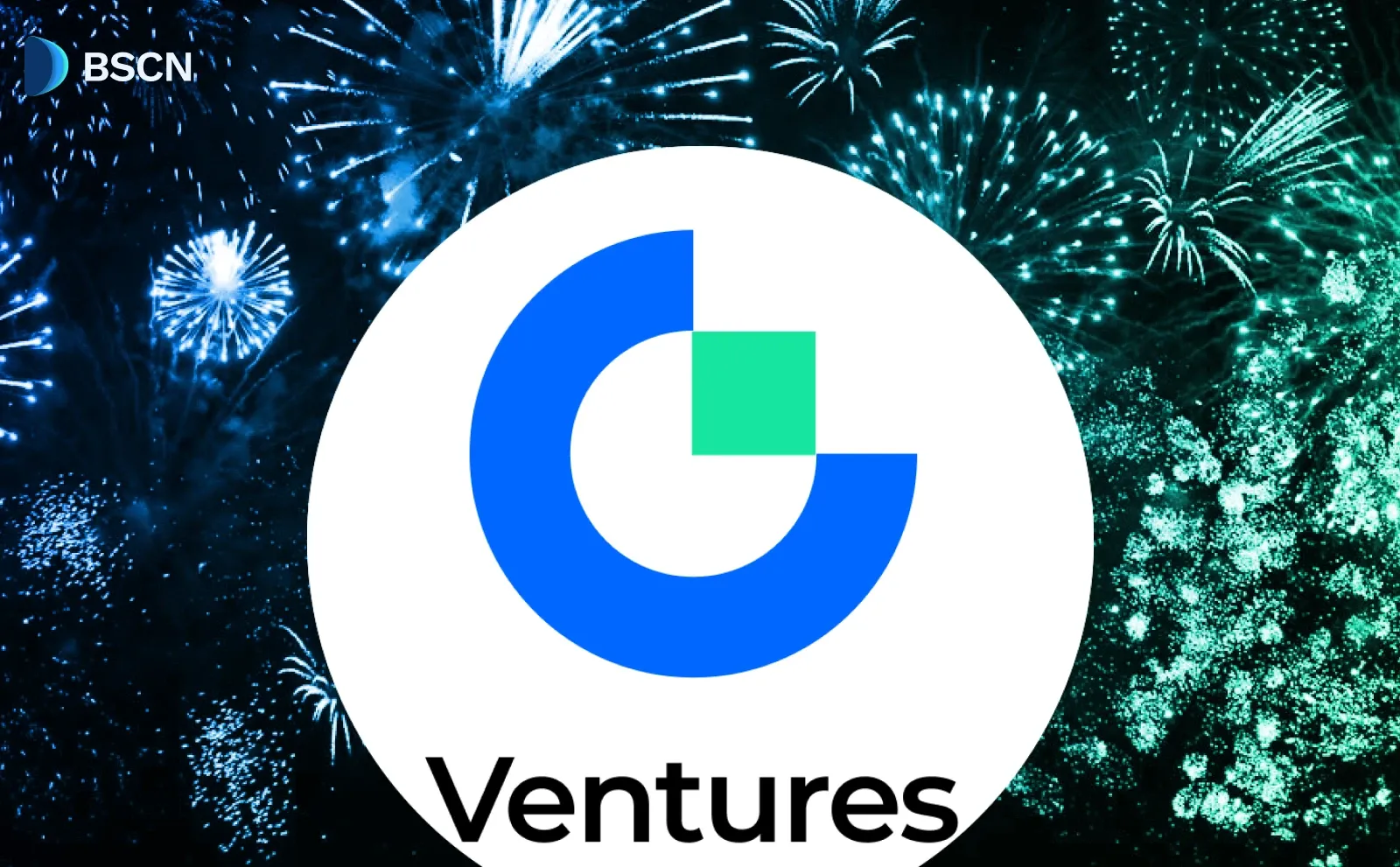Deepdive
(Advertisement)
Theta Network Powers Decentralized AI and Media Apps

Theta Network transforms from video streaming to AI infrastructure with hybrid EdgeCloud, AWS integration, and partnerships spanning sports teams to universities.
Crypto Rich
August 22, 2025
(Advertisement)
Table of Contents
Theta Network has transformed from a video streaming solution into a comprehensive infrastructure that powers AI and media applications. The platform tackles inefficiencies in centralized systems by utilizing user-shared resources for content delivery, computing, and storage across multiple sectors.
This transformation shows how decentralized systems can compete with traditional cloud providers. Theta reduces costs while democratizing access to high-performance computing resources, positioning itself as essential infrastructure for next-generation digital applications.
What Problem Does Theta Network Actually Solve?
Centralized content delivery networks and cloud computing platforms create bottlenecks that affect millions of users daily. Traditional systems suffer from several key problems:
- Geographic concentration leading to performance bottlenecks
- High infrastructure costs passed to users
- Single points of failure affecting millions during outages
- Limited scalability during peak demand periods
Peer-to-Peer Solution Approach
Theta tackles these challenges differently. Users contribute bandwidth, storage, and computing power from idle devices, creating a distributed network that potentially cuts streaming costs by up to 90%. The approach also provides better performance through edge computing.
The model works particularly well for AI workloads and media delivery. Instead of routing all traffic through distant servers, content streams from nearby edge nodes. AI model training and inference tap into distributed computing power that scales with demand rather than requiring massive upfront infrastructure investments.
Technical Foundation and Innovation
Theta operates through two interconnected systems. The Theta Blockchain handles payments, staking, and Ethereum-compatible (EVM) smart contracts using proof-of-stake consensus enhanced with directed acyclic graph technology.
The Theta Edge Network takes a different approach—it manages decentralized computing and storage using participant devices. Edge nodes contribute resources in exchange for $TFUEL tokens. This creates economic incentives for network growth while letting applications access computing power without traditional cloud infrastructure costs.
Guardian Node v4.1.0 launched on August 12, 2025, with support for 10 times more nodes than previous versions. Meanwhile, Metachain technology enables custom subchains with 1-2 second transaction finality, positioning Theta for enterprise adoption requiring predictable performance standards.
Additional Platform Components
Theta offers several specialized applications beyond its core infrastructure:
- Theta Video API: Cuts transcoding, storage, and delivery costs by up to 90% through edge node utilization
- Theta Web3 Theater: Handles end-to-end decentralized video management
- ThetaDrop NFT Marketplace: Powers brand collaborations with major companies including Katy Perry and Samsung
- On-chain Data Hubs: Enable global participation in AI model training and deployment
These tools work together to create a comprehensive ecosystem. Content creators can tap into the same infrastructure that powers enterprise AI deployments, creating synergies across different use cases.
How Does Theta's EdgeCloud Platform Work?
EdgeCloud represents Theta's biggest infrastructure breakthrough. Launched on May 1, 2024, the platform combines decentralized edge computing with traditional cloud providers like Amazon Web Services, delivering several enterprise-focused capabilities:
- Agentic AI tools for automated task management
- RAG Chatbot dashboard with real-time customization
- AWS Trainium and Inferentia chip integration (announced July 24, 2025)
- Up to 50% cost savings for AI workloads compared to traditional cloud services
- Distributed verifiable inference for trustless AI processing
Distributed AI Processing
What makes this especially compelling is the distributed verifiable LLM inference capability that launched on July 2, 2025. The system processes large language models like Llama 3 and Stable Diffusion without requiring users to trust centralized providers. This addresses growing concerns about AI centralization while maintaining the performance standards that enterprises actually need.
Real-World Enterprise Applications
Theta's practical implementations span multiple sectors, demonstrating the platform's versatility in handling real-world enterprise requirements. From sports entertainment to academic research, organizations are deploying Theta's AI and infrastructure capabilities for production applications that serve millions of users.
The following partnerships demonstrate how various industries are utilizing Theta's decentralized infrastructure for practical applications.
Sports and Entertainment Partnerships
Sports organizations are leading the charge with practical AI implementations across multiple use cases:
- Olympique de Marseille: AI mascot and validator operations
- San Jose Earthquakes: "Quakebot" fan engagement system
- FC Seoul: "SeoulMate" bilingual AI assistant
- Philadelphia Union: Comprehensive fan engagement platform
- Dignitas Esports: "Digi" AI serving 70,000+ users
These aren't just tech demos—they're serving real users at scale.
Academic Research Collaborations
Academic partnerships add serious validation to the technology's enterprise capabilities across six major universities:
- Yonsei University: Recommendation AI with AWS Trainium
- Syracuse University: Causal inference research
- George Mason University: Extended reality security and DeFi
- Hongik University: Specialized data processing applications
- Brandeis University: Data processing research
- Kangwon National University: Advanced data analytics
Enterprise Technology Integrations
Esports organizations are also jumping in. Cloud9 esports and 100 Thieves integrate Theta technology for gaming and eCommerce applications, with 100 Thieves showcasing eCommerce AI integration through Shopify connectivity. This demonstrates how Theta's AI capabilities can enhance online retail experiences while cutting infrastructure costs.
Hypernology's manufacturing AI implementation proves the technology works in industrial applications beyond media and entertainment.
Team Leadership and Governance Structure
CEO Mitch Liu and CTO Jieyi Long lead Theta's development, bringing substantial experience from major technology companies including previous work at YouTube and Twitch. Liu co-founded SLIVER.tv, which later became Theta Labs, specializing in gaming and esports applications. Long brings deep expertise in virtual reality and blockchain technology development.
The governance model operates through THETA staking mechanisms, where validators and community members can propose network changes. This balances enterprise validator input with community participation. Events like ThetaEuroCon engage developers and foster ecosystem growth through direct feedback between users and development teams.

Why Do Companies Choose Theta's Tokenomics Model?
Theta uses a dual-token tokenomics model designed for long-term sustainability and network security. $THETA serves as the governance and staking token with a fixed supply of 1 billion tokens, ensuring non-inflationary economics for network security and validator rewards.
TFUEL assumes a distinct role as the utility token for transaction fees and edge node rewards. Unlike THETA's fixed supply, TFUEL employs inflationary mechanics that are balanced by burn mechanisms tied to network activity. Increased network usage consumes more TFUEL, creating deflationary pressure during peak periods.
Major enterprise validators securing the network include:
- Google: Blockchain infrastructure validation
- Samsung: Consumer device integration
- Sony: Media and entertainment applications
- Binance: Exchange and trading platform support
- AWS: Cloud infrastructure partnership
Crypto.com re-staked 15 million THETA tokens in 2025, demonstrating continued institutional confidence in the network's prospects.
Staking Economics and Incentives
The staking mechanism requires validators to lock THETA tokens for network participation. Here's what stands out: a majority of THETA supply (over half) remains staked, indicating strong holder confidence while reducing circulating supply. This creates genuine scarcity while ensuring network security through economic incentives.
Edge nodes earn TFUEL based on the actual resources they contribute—namely, bandwidth, storage, and computing power. Payment scales with usage, encouraging participants to maintain high-quality service. This model rewards actual network contributors rather than passive token holders.
TDROP extends the ecosystem through NFT utilities and marketplace functions. Launched as part of the 2025 roadmap, the token enhances ThetaDrop marketplace capabilities while providing additional utility for digital collectibles and brand collaborations with companies like Katy Perry and Samsung.
How Reliable Is Theta's Technical Infrastructure?
Network security relies on proof-of-stake consensus with significant economic stakes from major enterprise validators. The combination of validators, including Google, Samsung, Sony, Binance, and AWS, creates multiple security layers while eliminating the single points of failure that plague centralized systems.
Patented digital rights management ensures secure content delivery for media applications. This technology addresses intellectual property concerns that have prevented many content creators from adopting decentralized platforms. The system maintains creator control while enabling peer-to-peer distribution.
Operational reliability comes from a distributed architecture that keeps functioning even when individual nodes fail. Unlike centralized services, where server failures affect all users, Theta's edge network automatically routes around problems using available nodes. The mainnet launched in 2019 and has operated continuously since then.
Advanced Technical Features
Key technical capabilities include:
- Turing-complete smart contract support: Ethereum compatibility through Metachain system launched in 2022.
- Custom subchains: 1-2 second finality with specialized parameters for enterprise requirements.
- FedML integration: Privacy-preserving machine learning for regulated industries (GDPR, HIPAA compliance).
- On-chain data hubs: Global AI participation and collaborative model training.
Developers can port existing applications with minimal modifications, thereby reducing adoption barriers for projects considering migration from other platforms. Organizations can deploy private chains with specialized parameters while maintaining a connection to the main network, accommodating enterprise requirements for customization and control.
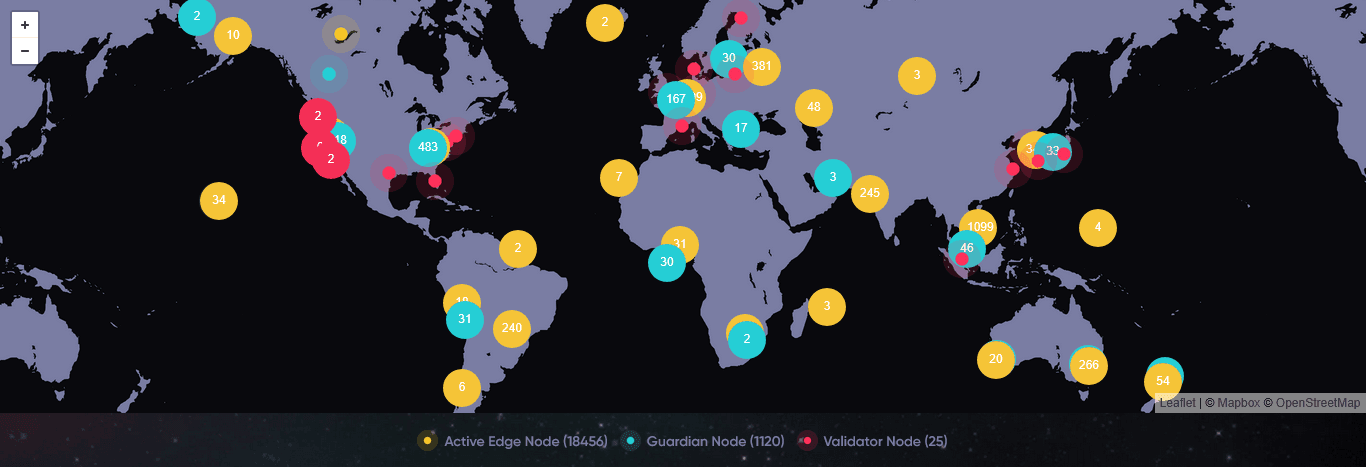
What Are Theta Network's Main Limitations?
Theta faces several challenges that could impact widespread enterprise adoption, ranging from market competition to technical barriers that require ongoing development and strategic solutions.
Market Competition Challenges
Competition from established cloud providers remains significant despite Theta's cost advantages. Amazon Web Services, Microsoft Azure, and Google Cloud offer mature ecosystems with enterprise support and compliance certifications that many organizations require. Theta faces the challenge of demonstrating equivalent reliability and support capabilities.
Adoption Barriers
Theta faces several significant challenges for widespread adoption:
- Competition from mature cloud providers (AWS, Azure, Google Cloud)
- Regulatory uncertainty in compliance-heavy sectors
- Edge node participation variability affecting reliability
- Legacy system integration complexity
- Energy demands exceeding residential edge node capacity
Technical and Market Barriers
Legacy system integration complexity slows enterprise adoption timelines. Organizations with existing infrastructure face significant migration costs and technical challenges when transitioning to hybrid or decentralized systems, requiring careful implementation planning and gradual transition strategies.
AI workload energy demands present real challenges for residential edge nodes. Power-intensive AI workloads can consume 500-1,000 watts per residential node, though full LLM training clusters consume megawatts—far exceeding typical home internet equipment capacity. Theta's hybrid model addresses this by routing heavy computational tasks to AWS Trainium chips while distributing lighter inference workloads across edge nodes. This maintains efficiency without overwhelming participant devices.
Unstaking events could impact network stability if large validators reduce participation. For example, if major enterprise validators like Google or Samsung simultaneously reduced their stakes during regulatory uncertainty, network security could temporarily weaken. However, the network's majority staking rate and diverse validator base create resilience, while hybrid cloud integration provides operational continuity even during significant unstaking events.
Where Is Theta Network Heading?
Platform Development Roadmap
The roadmap focuses on hybrid edge cloud expansion and AI agent development tools. Beta releases of enhanced EdgeCloud capabilities aim to facilitate broader enterprise adoption, while AI agent builders will empower non-technical users to deploy custom AI applications without requiring extensive technical knowledge.
Generative AI and video use case development targets content creation applications. These tools could democratize high-quality content production while reducing costs for creators and media companies. Enhanced TDROP features planned for 2025 will expand NFT marketplace capabilities and utility for digital collectibles.
Subchain deployment capabilities enable specialized applications requiring custom blockchain parameters. This technology allows organizations to maintain control over their infrastructure while benefiting from Theta's main network security and interoperability. Multiple subchain deployments are planned for the 2025 expansion phase.
Strategic Development Priorities
5G network integration positions Theta for mobile edge computing applications as telecommunications providers roll out next-generation infrastructure. Theta's edge nodes could provide computing resources much closer to mobile users, significantly reducing latency for real-time applications. This convergence particularly benefits AR/VR applications and autonomous vehicle systems, which require sub-10 millisecond response times.
Agentic AI development targets fan engagement and media personalization applications. These represent high-value use cases where AI can dramatically enhance user experiences while generating revenue for content creators and sports organizations.
Decentralized GPU scaling partnerships with companies like Aethir expand the network's computing capacity for demanding AI workloads. These collaborations address current limitations in edge node capabilities while maintaining the cost advantages that make distributed computing attractive. The integration enables access to high-performance GPUs distributed globally, reducing the computational bottlenecks that currently limit AI model training on purely decentralized networks.
Industry recognition continues growing, with recent high-profile discussions highlighting Theta's patented edge node technology for AI inference. This ongoing visibility from technology leaders demonstrates the platform's relevance in addressing current AI infrastructure challenges while positioning it for broader enterprise adoption.
Can Theta Network Scale for Mass Adoption?
Current enterprise partnerships validate Theta's readiness for commercial deployment at a significant scale. Universities, sports organizations, and technology companies actively use the platform for production applications, demonstrating the network's capability to handle real-world requirements across diverse industries.
Hybrid cloud integration addresses enterprise concerns about reliability and support through partnerships with established providers like AWS. By combining decentralized resources with traditional cloud infrastructure, Theta offers fallback options and service level guarantees that pure decentralized solutions simply cannot match.
Regulatory compliance improvements through partnerships with established cloud providers help address legal and security concerns. Enterprise customers can leverage Theta's cost advantages while maintaining compliance with industry regulations through hybrid deployment models.
The platform's journey from streaming focus to comprehensive AI infrastructure reflects genuine market demand for practical blockchain applications. Rather than chasing speculative use cases, Theta addresses real business needs with measurable cost benefits and performance improvements.
Conclusion
Theta Network demonstrates how blockchain technology can create practical value through hybrid approaches that combine centralized and decentralized systems. Its transformation from video streaming pioneer to AI infrastructure provider shows the potential for focused, utility-driven blockchain projects to achieve sustainable adoption across multiple industries. The platform's practical focus on real business needs over speculative use cases positions it as essential infrastructure for the next generation of decentralized applications.
For more information about Theta Network, visit the official website and follow @ThetaNetwork on X for updates.
Sources:
- EdgeCloud Platform Documentation - Hybrid cloud infrastructure details
- Academic Research Partnerships - University collaboration case studies
- Theta Community GitHub - Open source development progress
- Theta Network Whitepapers and Research Papers - Comprehensive technical papers on Theta's architecture, including the EdgeCloud whitepaper
- Theta Network Technical Documentation - Full overview of the blockchain, integration guides, and core technology explanations
- What is Theta Network - Introductory guide to Theta's dual-network structure for AI, media, and entertainment
- Theta Network GitHub Repositories - Code repositories and developer resources
- Theta Network Official X Account - Partnership announcements and real-time updates
Read Next...
Frequently Asked Questions
What makes Theta Network different from other blockchain platforms?
Theta provides decentralized AI and media infrastructure through hybrid EdgeCloud technology, combining AWS integration with edge computing for up to 50% cost savings over traditional cloud services.
How does Theta's dual-token system work?
THETA serves as the fixed-supply governance token (1 billion total), while TFUEL handles transaction fees and edge node rewards with burn mechanisms that create deflationary pressure during high network usage
Is Theta Network secure enough for enterprise use?
Yes, Theta uses proof-of-stake consensus with major enterprise validators, patented DRM, and distributed architecture. A majority of THETA tokens remain staked with hybrid cloud fallbacks.
Disclaimer
Disclaimer: The views expressed in this article do not necessarily represent the views of BSCN. The information provided in this article is for educational and entertainment purposes only and should not be construed as investment advice, or advice of any kind. BSCN assumes no responsibility for any investment decisions made based on the information provided in this article. If you believe that the article should be amended, please reach out to the BSCN team by emailing [email protected].
Author
 Crypto Rich
Crypto RichRich has been researching cryptocurrency and blockchain technology for eight years and has served as a senior analyst at BSCN since its founding in 2020. He focuses on fundamental analysis of early-stage crypto projects and tokens and has published in-depth research reports on over 200 emerging protocols. Rich also writes about broader technology and scientific trends and maintains active involvement in the crypto community through X/Twitter Spaces, and leading industry events.
(Advertisement)
Latest News
(Advertisement)
Crypto Project & Token Reviews
Project & Token Reviews
Comprehensive reviews of crypto's most interesting projects and assets
Learn about the hottest projects & tokens





